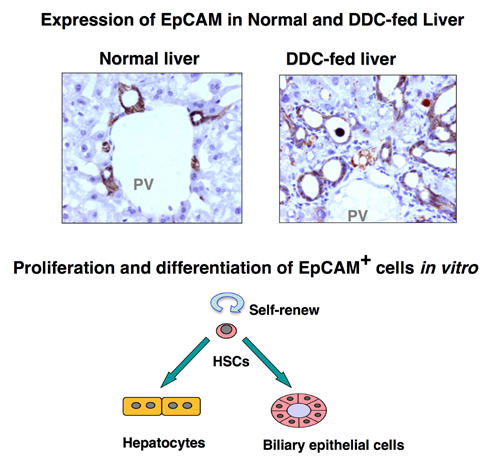Hepatic stem cells are present in EpCAM+ cells of normal and injured mouse liver
Hepatic stem cells (HSCs) are considered to proliferate and give rise to both hepatocytes and biliary epithelial cells. HSCs are found in fetal liver, while such cells in adult liver have been elusive. In adult, oval cells emerging in the periportal region of the severely injured liver have been suggested to be adult HSCs. We have identified two cell surface molecules, EpCAM and TROP2, that are expressed on oval cells. EpCAM+ cells were isolated from injured liver by cell sorting using anti-EpCAM antibody and shown to contain HSCs. As EpCAM is also expressed in bile ducts in normal liver, we also isolated EpCAM+ cells from normal liver and found that HSCs are also present in normal liver. Interestingly, the abundance of stem cells in normal and injured liver was not significantly different, indicating that most oval cells are transient proliferating cells but not real stem cells.
Program member
Atsushi Miyajima (Institute of Molecular and Cellular Biosciences)

Upper. EpCAM+ cells in normal and injured liver by DDC diet.
Lower. EpCAM+ cells contain HSCs that proliferate and differentiate to both hepatocytes and biliary epithelial cells.
